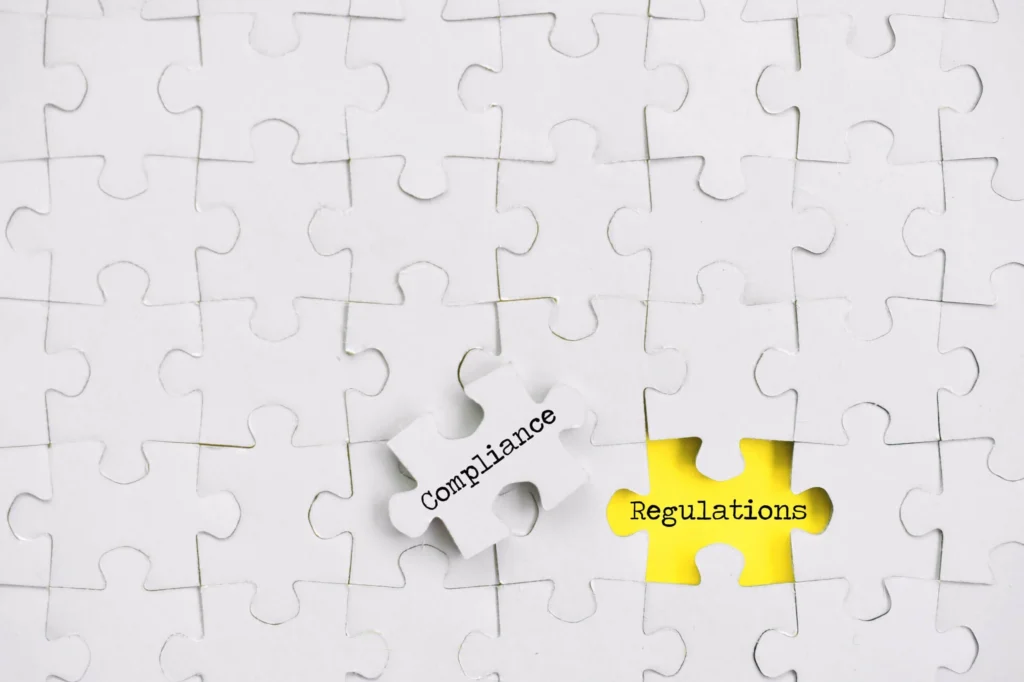The 2022 Marketing State of Play Report found that only 10% of companies have a clear plan to adapt to changes in privacy and consent such as 3rd party cookie deprecation. In today’s digital world, privacy and consent are more important than ever to consumers. As a result, consumers are losing trust in brands and becoming less willing to share their personal data – this is a major issue for businesses, as customer trust is essential for making sales. In fact, according to a recent study from Adobe, more than half of consumers say that if a business breaks their trust, they will never give the brand their business again. If companies want to maintain customer trust, they need to adapt their business and marketing strategies to meet the new demands for privacy and consent.
Fortunately, there are steps that businesses can take to build trust with their customers. One essential step is ensuring online brand compliance. This means using consistent branding across all of their marketing and communication materials, from their website and social media presence to their physical advertising and packaging. In this article, we will discuss the importance of brand compliance and how you can build trust with your customers through ongoing brand compliance monitoring.

What is Brand Compliance?
Your brand is more than just your logo, color palette, and typeface. It’s the complete package of what your business represents, how it makes customers feel, and how it differentiates itself in the marketplace.
Brand compliance is the process of ensuring that everything on your website strictly adheres to your brand guidelines. This includes ensuring that your content is on-brand, your messaging is consistent, and your overall look and feel align with your identity. By ensuring brand compliance on your website, you can protect and strengthen your brand equity.
What Does Brand Compliance Consist Of?
When ensuring brand marketing compliance, there are several key factors to consider. Maintaining brand consistency means that your team must review the following:
- Disclaimers and Disclosures: Companies must centralize their data, including disclaimers and privacy disclosures so that the proper legal information can be added to marketing materials quickly. Customers are more trusting of companies that openly provide their information to the public.
- Consistent, High-Quality Content: Content is king for many reasons. If your branded content is regularly inconsistent and disorganized, it sends a message that your quality, service, and products may not be up to par. In contrast, well-crafted and consistent content reflects quality and professionalism. It shows that you care about the details and that your business is committed to delivering a high-quality product or service.
- Company Rules and Regulations: Partner with Red Marker and set company-wide compliance rules and requirements as well as their triggers to identify risks within your marketing materials. This provides proper brand compliance guidelines for marketers to refer to when creating content.
- Visual Identity: Marketers must ensure that the company’s visual branding is consistent on their online and offline platforms. This includes using up-to-date logos and the correct colors, fonts, and imagery styles across all marketing and sales materials.
|
In order to maintain a consistent brand identity, it is essential to have an ongoing automated compliance process. This process ensures that all marketing materials are aligned with the company’s consistent messaging across channels. Without proper brand compliance, it is exceedingly difficult to ensure brand consistency in marketing, as misalignments in manual review can cost marketing teams time and money, and potentially damage a brand’s reputation with customers.
Ensure that advertising materials are compliant with your company’s brand & industry standards with our free Ad Compliance Handbook.

Why is Brand Consistency & Compliance Important for Building Consumer Trust?
Maintaining a consistent brand is important for improving customer trust due to the following factors.
- It helps set expectations: What kind of message do you want to send? What image do you want to portray? Using Red Marker’s marketing compliance software, you can continually send the same message through your branding, ensuring your audience will quickly learn what to expect from your company.
- Stand out amongst the competition: Few companies maintain brand consistency throughout their marketing materials. By creating a strong and recognizable brand, you can set your business apart from the competition and build loyalty among your customers.
- Boost sales: Customers are more likely to purchase products from companies that they feel they can trust. When customers trust a company, they are more likely to remain loyal and make repeat purchases. In today’s competitive marketplace, building consumer trust is essential for any business that wants to boost its sales.
How to Create Brand Consistency & Maintain Compliance
Implementing compliance software to automate the legal review process for your marketing materials is essential to ensuring each asset is compliant with internal and external regulations. Red Marker offers two distinct compliance features that enable marketers to conduct thorough compliance reviews every time.
Here are some ways your marketing team can develop and maintain brand consistency and compliance.
1. Implement Marketing Compliance Software
Red Marker’s document scanning feature analyzes document text and images to identify potential issues and flag them for review 30x faster than a manual review. This helps organizations avoid costly mistakes and ensure that their documents are up to standards. This feature supports numerous file types for seamless integration with third-party tools to build compliance accuracy.
2. Establish an Ongoing Brand Compliance Monitoring System
Red Marker’s web reports feature constantly monitors your own websites and third-party websites for regulatory risk detection and provides detailed monthly reports on any detected content. Red Marker’s powerful automation software provides a complete picture of all risks associated with marketing collateral, including compliance, reputational, and privacy risks.
3. Educate Your Team
Compliance starts with education. Each employee, from sales to top management, must be trained on brand compliance and why it is crucial in today’s market. Brand compliance training should be an ongoing process so that everyone is always up-to-date on the latest information. By taking these measures, you will help to ensure that your brand remains strong and trusted for years to come.
4. Integrate the Proper Applications
Streamline marketing compliance review by integrating Red Marker’s intuitive compliance software with your existing applications. Doing so can ensure your business enhances workflow efficiency throughout the legal review process.

Improve Trust Among Your Customers With Red Marker’s Brand Compliance Software
Red Marker is the leading provider of brand compliance software. Our AI software enables companies to improve trust among their customers by ensuring that their brands are compliant with all applicable laws and regulations.
Book a consultation with Red Marker today to learn more about how our software can help you improve trust among your customers.



